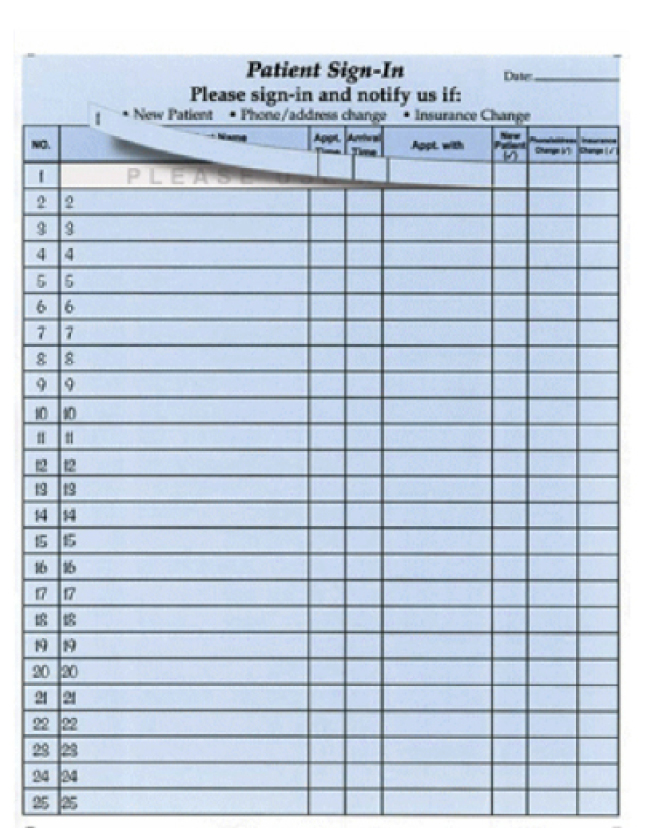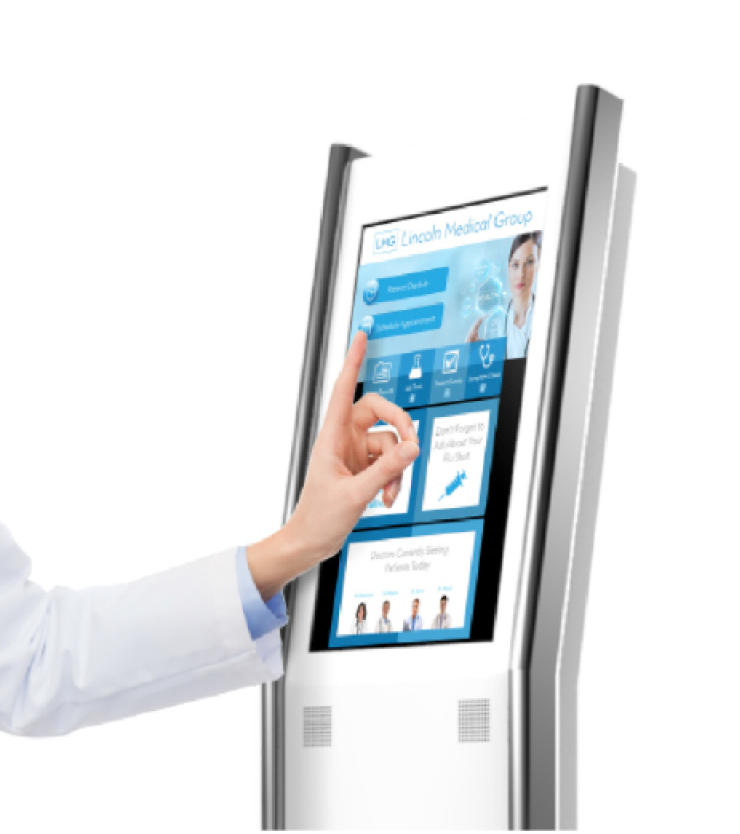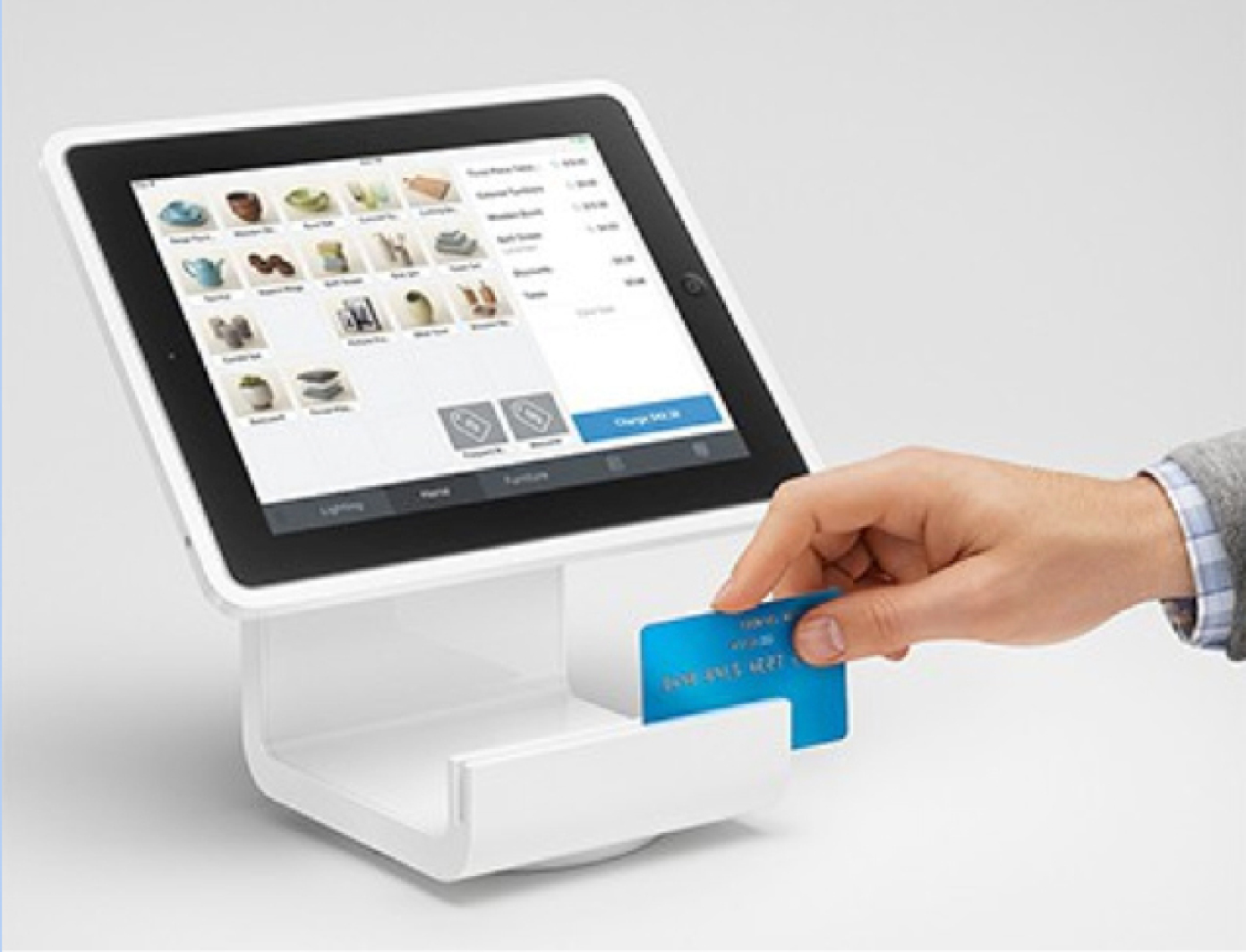In health care, we are in the midst of a digital revolution. As we play catch-up with other industries such as travel, finance, transportation, e-commerce, and, well, just about all the rest, many of medicine’s century-old analog technologies are slowly being replaced by digital tools. Most medical offices have been reluctantly nudged into the EHR space by government policy, and many physicians are struggling with certain aspects of these early-generation technologies. There have been some digital successes; for example, most practice management (PM) systems do a serviceable job of scheduling and billing and are light-years ahead of their paper predecessors (although there is ample room for improvement). My last Hot Topics column1 documented the downfalls of current EHRs, but this edition focuses in on a seemingly small part of the patient practice experience: check-in.


Are you still using sign-in sheets (Top)? Or should this be in your waiting room (Bottom)?
Most practices, despite employing EHRs, have an analog (ie, paper) patient check-in that hasn’t changed since the Hippocratic Oath. The most significant advancement of the millennia has been the HIPAA-compliant privacy sign-in sheet with peel-off tabs (Figure 1A). In my experience, the large majority of US medical practices ask their patients to sign in by hand and then fill out paper forms (or, at best, present prefilled PDFs downloaded from the practice website). Our busy receptionists then do all of the tedious analog-to-digital transcription (as do our techs for the medical history). In a busy office, this can consume a lot of resources, create an actual queue at the check-in desk, and lead to transcription errors that end up as claim denials.

The Square stand point-of-sale design would befit a technologically savvy practice.
Once again, I haven’t found a suitable technological solution to this problem, or at least one that can integrate with my specific PM system. Most EHRs have what’s called a patient portal (Meaningful Use Stage 2 Requirement), but using a patient portal for check-in requires patients to create a login and password, and that is not a real waiting room solution.
Now, there are certain forward-thinking EHRs that have created digital patient intake apps, such as DrChrono (an iPad-first EHR; https://www.youtube.com/watch?v=5zIcTkDDt6I). When a patient arrives, the receptionist simply taps the patient in on the scheduling screen and hands an iPad to the patient. The screen is locked solely for that specific patient inputting his or her demographic and medical insurance info, snapping a photo of him- or herself, and even filling out office questionnaires—all seamlessly integrated into the DrChrono EHR.
There are a few technology companies working on a standalone solution for patient onboarding or check-in, such as Seamless Medical and Phreesia. Phreesia provides the practice with special tablets that are handed to all incoming patients. These tablets not only collect patient demographics and practice questionnaires, but they also feature two other useful functions. First, patients are asked to swipe their insurance cards on the tablets, performing an immediate eligibility check. Second, patients are asked to pay their copays (or outstanding balance due) with a swipe of their credit cards—all from the comfort of the reception room couch. While this sounds great in practice, I’ve seen the Phreesia pads, and compared with iPads and Android tablets, they are downright clunky and dated and will not impress any of your millennial patients with their style. Also, they don’t integrate with my (or many) ophthalmology PM/EHR systems, so there is still a lot of manual data entry required.
What we need in our technologically advanced field is a simple and efficient patient check-in technology—imagine if Steve Jobs and Jack Dorsey (Cofounder of Twitter and Square payments) were designing this technology. You’ve likely seen a Square point-of-sale iPad stand (Figure 2) at your local coffee shop. We need such stylish solutions in our waiting rooms.
Once again, outside of health care, there are already beautiful and elegant check-in technologies. One popular visitor registration product—used in the lobbies of many tech companies—is Envoy (https://signwithenvoy.com/).Take a look at their website, and you’ll have reception room envy. Zivelo makes beautiful kiosk hardware (Figure 1) that is used mostly in other industries, although they are looking to get into health care (https://www.zivelo.com/healthcarekiosks/?gclid=CM-Hipzh_8ACFWZo7AodFGcAzg).
The banking world has long had ATMs to free bank tellers from simple repetitive tasks. In the past half-decade, most modern airports have installed check-in kiosks to greatly assist flyer check-in. We need similar well-designed technology in medicine. And this is not to replace the receptionist or create technological barriers with our patients; to the contrary, these technologies will allow our freed-up staff to engage the human element and provide a higher level of service than ever before.
What digital sign-in solution are you using? Does your EHR provide a solution? Would you buy one of these products if it were well designed, HIPAA compliant, loved by patients and staff, and made your office more productive? Anybody want to join my new startup? (LOL)
1. Raviv T. EHR: my wish list. MillennialEYE. July/August 2014.




